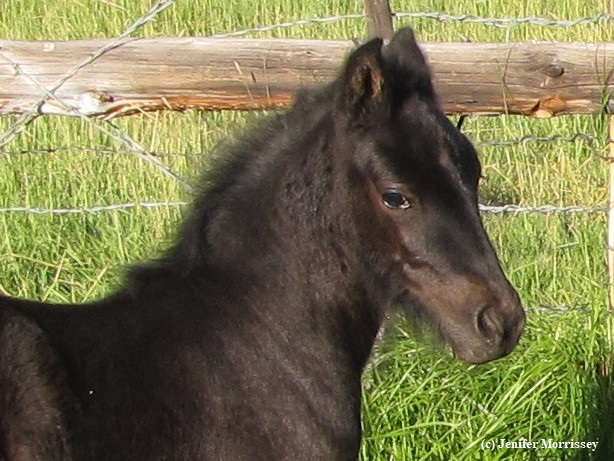Mean or Mouth-Expressive?
/There is an often-used Fell Pony stallion whose temperament is sometimes called into question. Early in my Fell Pony career, I heard and saw things that suggested the rumors were true. Then there came a period when I got positive reviews about the stallion, and I was left wondering how all this seemingly conflicting information from both sides of the Atlantic could be about the same pony. Now I think I’ve figured it out!
The early evidence I received included hearing that the stallion in question had bit its owner’s abdomen so hard as to leave a significant welt. Then I saw one of the stallion’s daughters, who had a set to her jaw and look in her eye that suggested she wasn’t happy with the world. I had met members of the mare side of that pony’s family, none of whom had temperament issues nor the hard look I’d seen in that mare, so it seemed clear to me the stallion was the source of the mare’s attitude. Then I saw a son of the stallion being approached with a whip by its owner, and I heard of other temperament issues in second generation offspring of the stallion, so I vowed as a breeder to keep my distance from that stallion line.
Years later I happened to meet the owners of the stallion, and almost without prompting they said, “He’s not mean,” as if knowing in advance what I’d been told about him. I immediately responded that he was heavily used enough that he must have an acceptable temperament, and the conversation moved on to other pony-related topics. I was left wondering, though, how to square that comment about the stallion’s temperament, albeit potentially biased since it was from the pony’s owner, with all the other things I’d heard and observed regarding the stallion’s temperament.
The Fell Pony gene pool is relatively small, so it was only a matter of time before a pony entered my herd that was descended, several generations back, from this stallion that I’d vowed to avoid. The blessing of the pony in my herd was learning how to make all the comments I’d heard about the stallion it was descended from make sense. This pony had the set to its mouth and hard look to its eye that I’d seen in the daughter of the stallion. And it wasn’t uncommon for this pony to walk up and nip me before I even knew what was happening, until we’d established a relationship where they understood that wasn’t acceptable. Even then, on occasion, this pony would grab my jacket and jerk it if I didn’t pay attention to them first. Yet the pony in my herd had good conformation for our breed and was easy to work with as long as I minded its mouth.
I have realized now why the stallion’s owners said what they said. The stallion isn’t mean. Rather than mean, the stallion and his line must be mouth-expressive like the pony in my herd. He and his line have other attributes that are useful to us as Fell Pony breeders. So long as we can be mindful that they’re mouth-expressive, we can all get along fine!
Here’s some parting food for thought: I think it’s important if we’re Fell Pony Breeders to keep some things in mind: 1) traits skip generations as they did with the pony in my herd, so often we won’t know where something came from; and 2) if we were as breeders to eliminate from consideration any pony descending from a stallion with temperament problems, we’d stop breeding Fell Ponies. Trust me, I’ve done the research! And in defense of stallions, sometimes it’s their handlers who create the temperament problem. If you’re interested in more on that line of thinking, click here to learn more about my article “Neither Carrot Nor Stick” from Rural Heritage magazine that includes in part a story about a Fell Pony stallion’s temperament.
© Jenifer Morrissey, 2017
More observations like this one about the Fell Pony breed can be found in my book Fell Ponies: Observations on the Breed, the Breed Standard, and Breeding, available internationally by clicking here or on the book cover.




